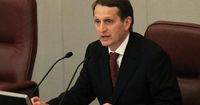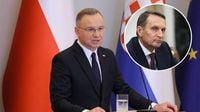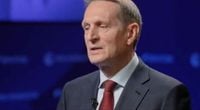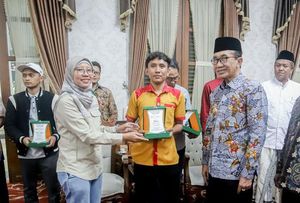On April 15, 2025, Siergiej Naryszkin, the head of Russia's Foreign Intelligence Service, made a controversial statement during his official visit to Belarus, asserting that Poland and the Baltic states exhibit a "high level of aggressiveness." This comment comes amidst rising tensions in Eastern Europe, particularly in relation to the ongoing conflict in Ukraine.
Naryszkin's remarks were made during a meeting with Belarusian President Alexander Lukashenko in Minsk, where he emphasized that the security services of Russia and Belarus are prepared for "proactive action" due to the escalating situation in Europe. He warned that if NATO were to attack Russia or Belarus, Moscow would retaliate against the North Atlantic Alliance as a whole, but Poland and the Baltic countries would be the first to suffer the consequences.
"Poland, at least in rhetoric, is constantly rattling its weapons," Naryszkin stated, highlighting Poland's recent announcement of plans to deploy approximately 2 million anti-tank mines along its borders with Belarus and the Kaliningrad Oblast of Russia. He noted that Poland has also expressed a willingness to host American nuclear weapons, a move that has raised concerns in Moscow.
These statements reflect a broader strategy by Russia to portray NATO as a provocative force in the region. Naryszkin's comments were echoed by President Andrzej Duda of Poland, who dismissed them as "classic, deceptive Russian disinformation." Duda emphasized that NATO is a defensive alliance, and all of its actions are a response to aggressive behavior from Russia.
During a press conference alongside Croatian President Zoran Milanović, Duda asserted, "The only aggressor attacking, bombing, and killing people is Russia." He condemned Naryszkin's remarks as part of a pattern of Russian propaganda aimed at justifying its military actions in Ukraine and elsewhere.
In his address, Naryszkin also touched on the situation in Ukraine, claiming that the current government in Kyiv is not interested in peace and desires a military continuation of the conflict. "We understand that Ukraine wants a military continuation of the conflict and we understand why," he said, suggesting that the Ukrainian authorities seek to maintain their positions by prolonging hostilities.
As tensions mount, Naryszkin highlighted the increasing military activities of the Baltic states near the borders of Russia and Belarus, which he claims contribute to a "sharp and very dangerous crisis on the European continent." His remarks come as NATO continues to strengthen its presence in Eastern Europe, a move viewed by Russia as a direct threat to its security.
In a related development, discussions between Russia and the United States have reportedly intensified, with Naryszkin noting that there is currently a "fairly intensive dialogue at various levels" between the two nations. This statement follows a meeting between Steve Witkoff, Donald Trump's special envoy for the Middle East, and Russian President Vladimir Putin, where they discussed conditions for achieving lasting peace, particularly concerning annexed Ukrainian territories and NATO relations.
Witkoff indicated that the negotiations focus on five territories and the implications of NATO's Article 5, which ensures collective defense among member states. While no specific details of the discussions were disclosed, the very fact that talks are occurring has been viewed as a positive development amid the ongoing tensions.
As the situation continues to evolve, both NATO and Russia remain on high alert, with military posturing and rhetoric escalating on both sides. The potential for conflict remains a looming threat, especially as Naryszkin's warnings resonate within the context of NATO's military buildup in Eastern Europe.
The international community watches closely, aware that the actions taken in the coming days and weeks could have profound implications for regional stability and security. The ongoing conflict in Ukraine, coupled with the rhetoric from both Moscow and NATO allies, underscores the precarious nature of the current geopolitical landscape.
In summary, Naryszkin's statements reflect a critical moment in the ongoing tensions between Russia and NATO, with both sides preparing for potential conflict while engaging in diplomatic discussions. As the situation develops, the focus remains on how these dynamics will shape the future of security in Europe.








